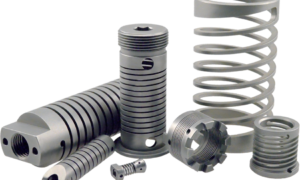When it comes to managing pests effectively, knowledge is your strongest weapon. Many homeowners and business owners react to infestations after they’ve already taken hold, but understanding the psychology and behavior of pests can help prevent them from ever becoming a problem. Whether it’s ants marching across your kitchen counter or rodents nesting in your attic, the key to successful pest management lies in knowing why pests act the way they do, and using that knowledge to keep them away for good.
Understanding the Motivation Behind Pest Behavior
Just like humans, pests have needs that drive their actions: food, water, shelter, and safety. When these essentials are available, your home or business becomes an ideal habitat.
Food Sources
Pests are opportunistic feeders. Crumbs on the floor, open garbage bins, and pet food left overnight are open invitations. Ants, roaches, and rodents have an incredible sense of smell and can detect food from long distances. Even small amounts of grease or spilled sugary drinks can attract them.
To deter these intruders, cleanliness is critical. Regular sweeping, wiping down surfaces, and properly sealing food containers make your space far less appealing.
Water and Moisture
Water is another crucial factor for pest survival. Many insects, such as cockroaches and silverfish, thrive in humid environments. Leaky pipes, damp basements, or condensation around windows can become perfect breeding grounds. Addressing plumbing issues and maintaining proper ventilation reduces the moisture levels that attract pests.
Shelter and Warmth
Pests are always seeking safe places to breed and hide from predators. Cracks in foundations, gaps under doors, or cluttered storage areas offer easy access and protection. Rodents, for instance, can squeeze through openings as small as a dime, while insects can crawl through even tinier gaps. Sealing entry points and keeping spaces organized minimizes their hiding spots.
The Science of Pest Patterns
Pests don’t invade randomly, their actions follow predictable patterns influenced by seasons, weather, and environmental cues.
Seasonal Shifts
During colder months, pests like rodents seek warmth indoors, while in warmer seasons, insects such as ants and mosquitoes become more active. Understanding these seasonal trends helps homeowners plan preventative treatments before infestations spike.
Nesting and Reproduction Cycles
Insects and rodents reproduce rapidly. A single mouse can have up to 10 litters per year, while cockroaches produce hundreds of offspring annually. Interrupting these reproductive cycles through professional pest management can stop infestations before they explode.
Territory and Communication
Pests are social creatures. Ants, termites, and bees communicate through pheromones, chemical signals that guide others to food sources or alert them to danger. Understanding these signals allows pest control professionals to target colonies efficiently, breaking communication lines and disrupting their behavior.
Common Household Pests and Their Behavioral Traits
Ants
Ants are masters of teamwork. They leave scent trails for others to follow, creating efficient lines between food and their nests. To control ants, you must eliminate both the visible ones and the colony. Simply wiping away the trail doesn’t solve the problem, professional treatment targets the source.
Cockroaches
Cockroaches are nocturnal and thrive in dark, damp environments. They are highly resilient, capable of surviving without food for weeks. These pests are drawn to kitchens and bathrooms, where food residue and moisture are abundant. Preventing them requires strict sanitation and sealing entry points around pipes and drains.
Rodents
Rats and mice are intelligent, cautious creatures that memorize routes and use their whiskers to navigate in the dark. They’re also known to chew through walls, wires, and insulation. Their droppings contaminate surfaces, posing serious health risks. Keeping them away means addressing structural vulnerabilities and using humane, targeted traps.
Termites
Termites are silent destroyers. They feed on cellulose found in wood and paper products, often going unnoticed until significant damage has occurred. Their colonies operate with precise social organization, workers, soldiers, and reproductives each play a specific role. Regular inspections and preventative treatments are essential to safeguard your property.
Preventing Pest Problems Before They Start
Understanding pest behavior is just the beginning. Prevention involves combining knowledge with practical action.
Regular Inspections
Routine inspections, both inside and outside your property, help identify early warning signs such as droppings, gnaw marks, or mud tubes. Addressing small issues early can prevent large infestations.
Sanitation and Waste Management
Keep trash sealed, clean drains regularly, and avoid leaving food out overnight. Even minor lapses in sanitation can encourage pest activity.
Yard Maintenance
Pests often start outside before finding their way in. Keep vegetation trimmed, remove standing water, and store firewood away from your home’s foundation. This reduces the likelihood of attracting insects and rodents.
Professional Pest Control Services
While DIY efforts can help with minor issues, professional pest management provides long-term protection. Experts use environmentally responsible methods to identify, treat, and prevent pest infestations, based on behavioral science and local conditions.
For example, if you live in or around Palm Beach County, relying on professionals who understand the local pest ecosystem is vital. Local experts specializing in pest control Lantana FL are familiar with the unique pest challenges that Florida’s warm, humid climate presents.
How Environmental Factors Influence Pest Activity
Florida’s tropical environment offers year-round pest activity. High humidity and mild winters mean there’s never a true “off-season.” Ants, mosquitoes, and rodents remain persistent throughout the year.
Rainy seasons increase mosquito breeding, while drought conditions drive pests indoors in search of water. Understanding these local environmental factors allows homeowners to take proactive steps, sealing entry points before storms, maintaining clean gutters, and scheduling seasonal pest maintenance.
The Role of Integrated Pest Management (IPM)
Integrated Pest Management (IPM) focuses on long-term prevention rather than short-term extermination. This method combines scientific monitoring, habitat modification, and environmentally responsible treatments to manage pest populations sustainably.
Key components of IPM include:
- Inspection and Monitoring: Identifying what pests are present and where they are active.
- Exclusion: Sealing entry points to prevent new infestations.
- Sanitation: Removing food and water sources.
- Targeted Treatment: Using eco-friendly and minimally invasive products where necessary.
By understanding the root causes of infestations, IPM reduces pesticide use and ensures a healthier home environment.
About Palm Coast Pest Control
For decades, Palm Coast Pest Control has been a trusted name in Florida pest control Lantana FL. Our team combines expertise with eco-conscious solutions to protect homes and businesses from unwanted invaders. From termite and rodent control to mosquito and lawn treatments, we deliver customized solutions tailored to your environment.



































